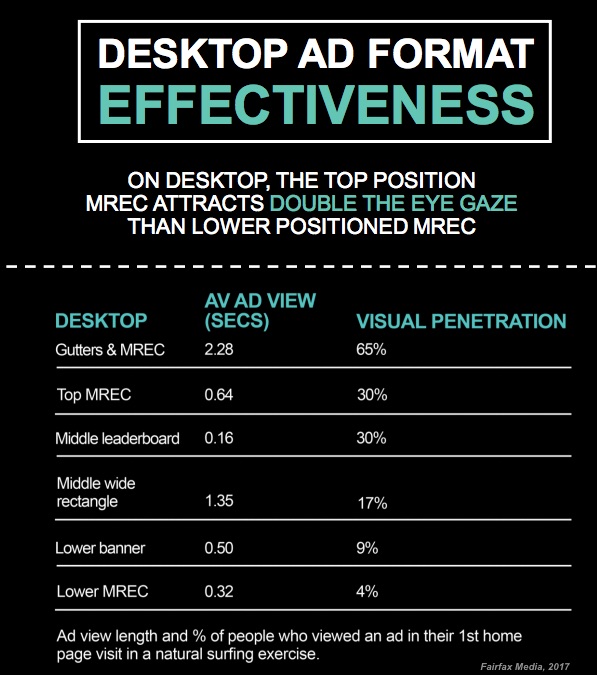
What Are the Best Performing Digital Ad Formats?
The good guys at MarketingProfs.com shared some data about the best performing digital ad formats. Let’s look at their information a little more closely to see what conclusion the typical marketer can draw.
First, it’s worth noting that this study was conducted by an Australian firm (Fairfax Media) on 100 Australian consumers who self identified as “visiting content sites regularly” and who were shown ads embedded in the content of a specific publisher (The Sydney Morning Herald). This brings up 3 questions of validity for applying these conclusions to ourselves:
- Can the results of a study on Australian consumers be generalized globally, or at least here in the United States? On this point, my personal belief is that they probably can be. I don’t have any compelling evidence that Australians consume media very differently than other people around the world. But I could be wrong.
- Can the results of people who visit content sites regularly be applied more broadly, such as to people who do not think of themselves as visiting content sites regularly? This one is a little more challenging. I certainly imagine that there are useful insights from this test groups that apply to humans generally, but I could also imagine that the ad attention habits of consumers who don’t visit content sites regularly could be very different from those who do.
- Can the results of a single site be applied to placements on all sites across the internet? On this point, I am the most dubious. How consumers take in ads on one news site, might be very different from how they take in ads on a different news site with a different layout, both of which might be even more dramatically different than a mommy blog, or a comedy site, etc.
But let’s put those doubts aside for a second, and look at the results for the best performing digital ad formats. First, the study found different results for mobile and desktop ads. For mobile ads, the most viewed ad format is a medium size rectangle that breaks up the content being consumed. On desktop the most successful ad format, much to my surprise, was the “gutter” ad. A gutter ad is a skyscraper style ad that is displayed completely to the left and/or right of a site’s primary layout.
I think it’s curious that we have essentially opposite results for desktop and mobile. Mobile, you want the ad as integrated into the content as possible, and desktop you want it as separate from the content as possible.
Having seen what the results are, let’s get back to our doubts about applicability. Should you start buying only mobile ad formats that will be embedded in content, and only gutter placements for desktop. I don’t recommend this. The big reason is that YMMV. Running tests with your own ads is so cheap and easy it should be mandatory. So don’t just buy mobile ad placements that break up content, spend a few extra bucks to test other mobile ad formats, then continue running those placement types that perform well. And do likewise with desktop gutter ads. You may find that your results are different from this study, and even from your previous campaigns. Doing a little testing means that your budget will be focused on the best formats for your specific audience and creative.
So what are your best performing digital ad formats? Do your own results mirror the study, or is your experience different?
Contact us today to learn more!





